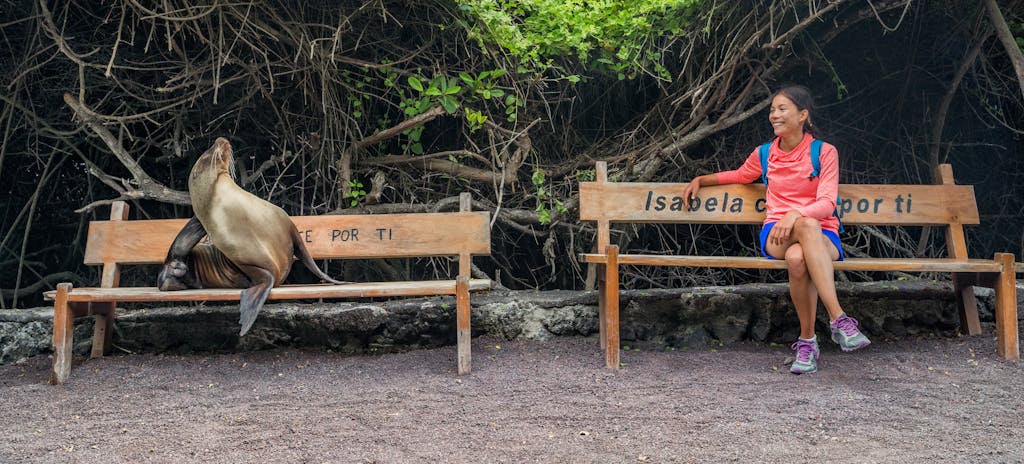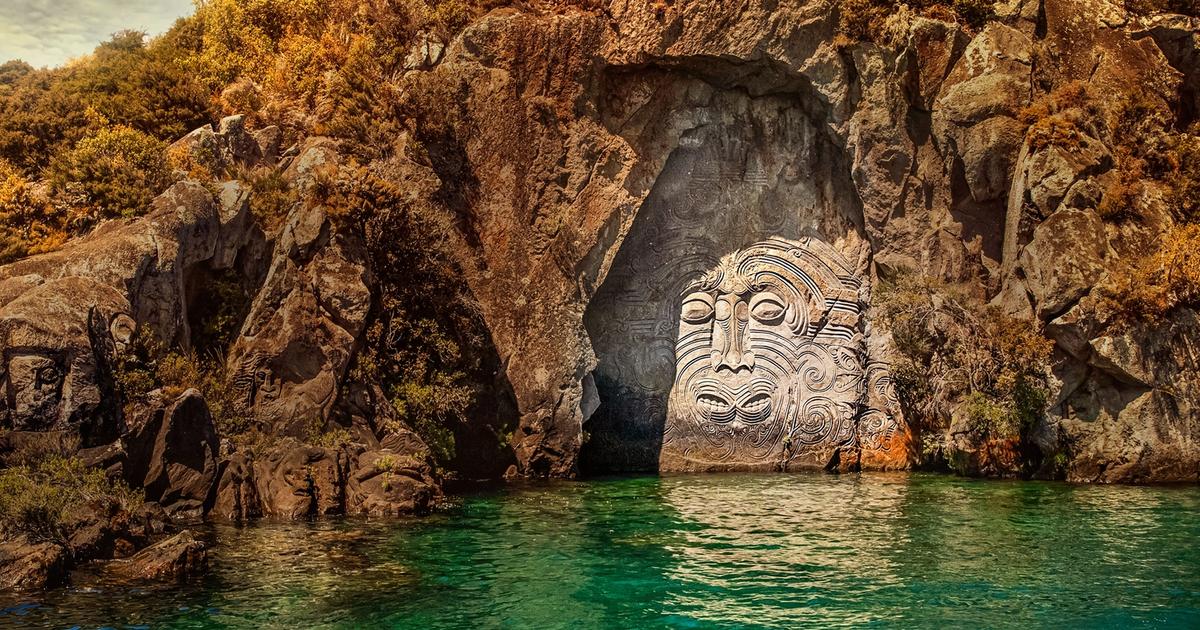Why Your Next Cruise Should Be to the Galápagos Islands
The Galápagos Islands, a province of Ecuador, lie more than 600 miles off its coast in the Pacific. Because the islands are remote, their plants and animals are unique, including some found nowhere else on Earth, as documented in Charles Darwin’s seminal work “On the Origin of Species.”
The government of Ecuador fiercely protects the Galápagos, including restricting access to its uninhabited islands. A cruise is the best way to travel to the Galápagos Islands because you can island hop and, with the help of local guides, will see the remarkable.
Getting to the Galápagos
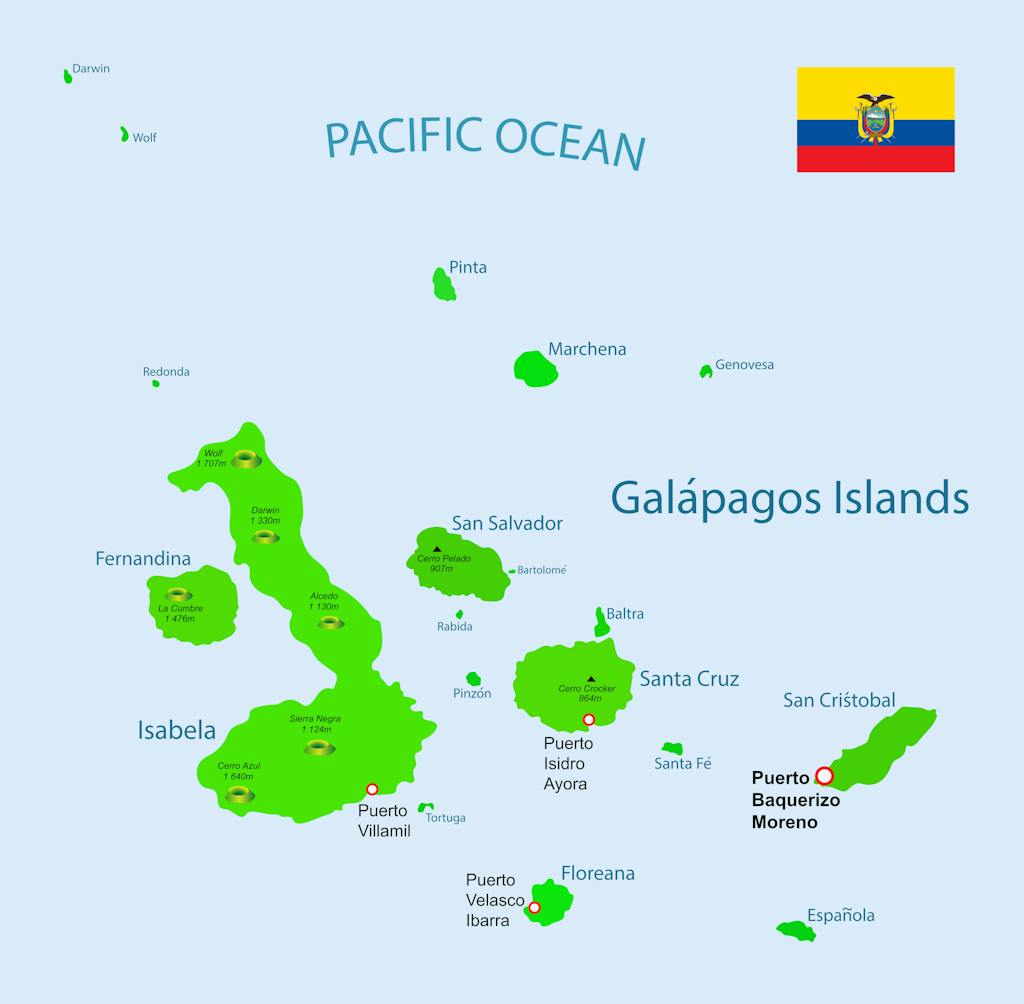
A trip to the Galápagos typically begins with a flight to Quito, Ecuador’s capital, on the mainland, followed by a flight to Baltra, the primary airport of the Galápagos. There, you will board your Silversea ship on a journey throughout the islands that will be led by a skilled expedition team.
Nineteen large islands make up the Galápagos, all set within a protected marine reserve, and 97 percent of the Galápagos Islands are a designated national park. The remaining 3 percent is allotted for human settlement.
Floreana, Isabela, San Cristóbal and Santa Cruz islands are inhabited. Day trips to the protected nature reserves on the other islands must be made under the supervision of an official park ranger.
What is the best way to get to the Galápagos?
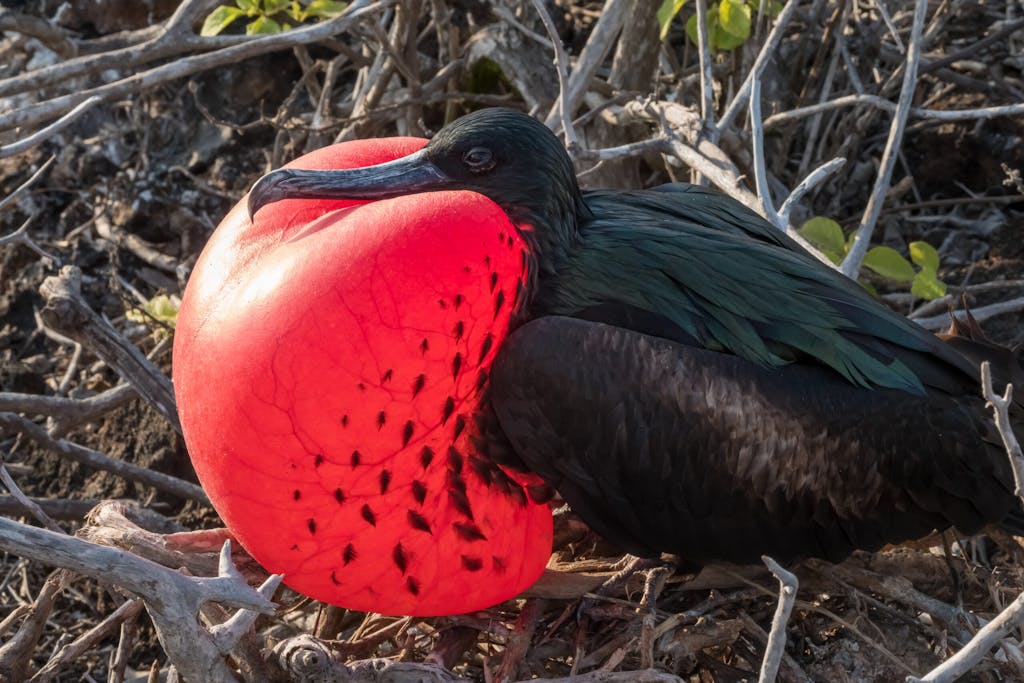
A ship is the most versatile way to see several Galápagos Islands during a one- or two-week cruise. There are north-central routes as well as a western itinerary; guests can choose to book either passage for a distinctive experience or combine the routes for a two-week, back-to-back sailing.
If you’re wondering how to choose your Galápagos cruise, consider the specific wildlife of the islands on your itinerary; some are better known for sea turtles and sea lion colonies, but only Fernandina and Isabela islands are home to Galápagos penguins.
You’ll see the startling frigate bird and the blue-footed booby, whose mating rituals are peculiar and inventive. Regardless of your destination, the entirety of the Galápagos is teeming with breathtaking wildlife.
Why see the Galápagos?
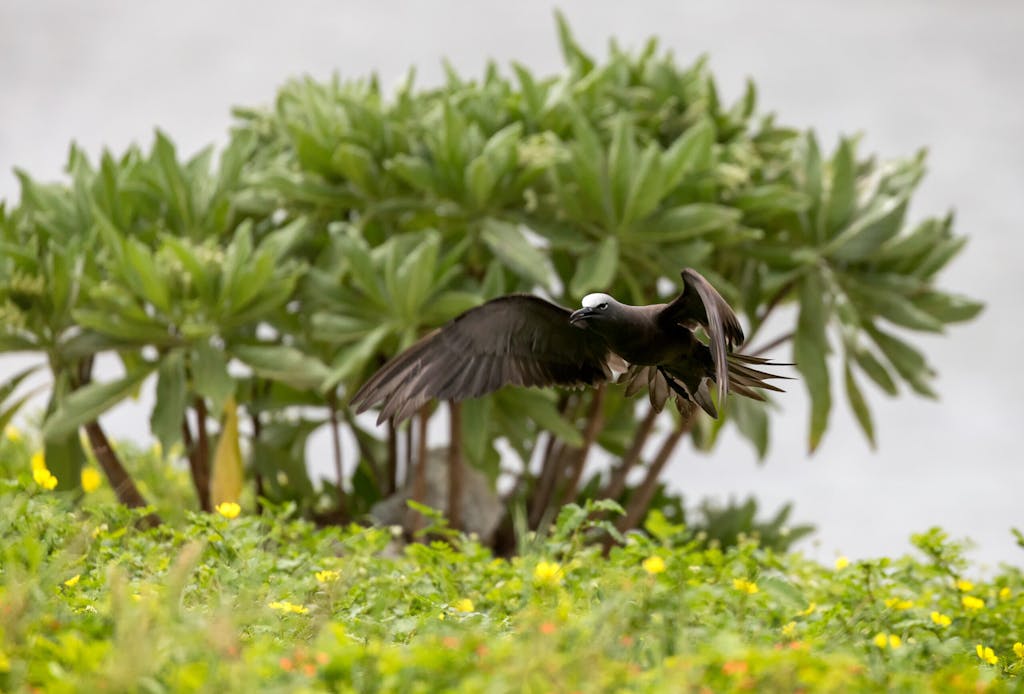
Nature is a huge draw for many travelers, and in some places, the creatures and plants are so stupendous that we travel thousands of miles to see them in person. In such wildlife-rich destinations as Alaska or Costa Rica, you must do sightings from a distance. In the Galápagos, the animal inhabitants are fearless. The distance visitors must observe is to protect the wildlife. Sea lions, iguanas, birds and other critters are liable to walk right up to you. Do not touch them.
This unbridled nature is not only thrilling but also an education in some of this Earth’s rare natural wonders and the admirable environmental protection.
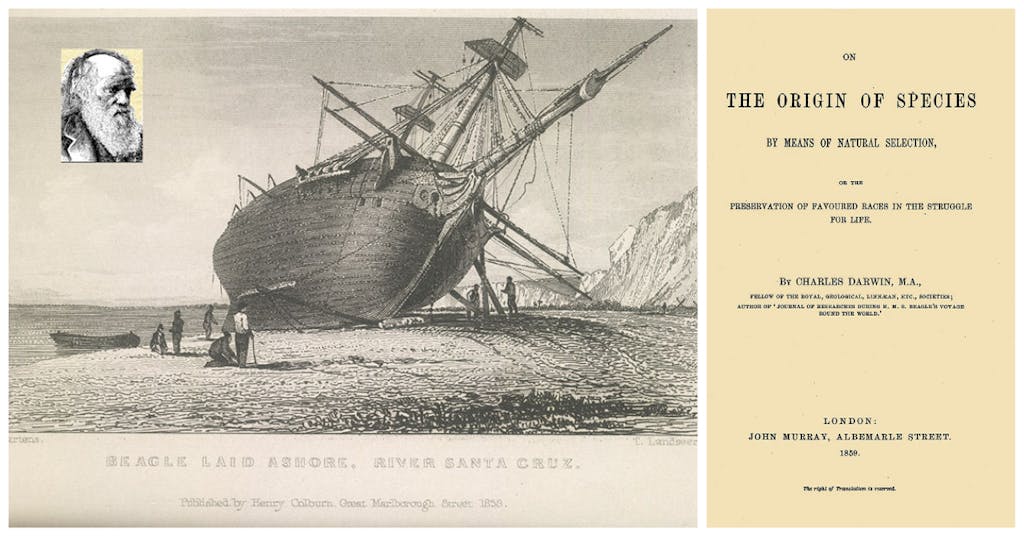
The same flora and fauna captivated researcher Charles Darwin in 1835 during his time in the Galápagos as part of a larger global voyage and sent ripples through the scientific community for centuries.
You may not make groundbreaking evolutionary discoveries on your voyage, but the naturalists and experts that make up the crew will talk you through every fish or flower you see. Connecting with such pristine nature is not only informative but also emotional.
Exploring the Galápagos

Forged from the fire of volcanic activity over the millennia, this archipelago remains one of the most volcanically active places in the world. It has 13 active volcanoes, so besides the marvel of its wildlife, it’s also a geological marvel.
On your cruise itinerary, you will visit at least a half-dozen of these islands during a week or more, often utilizing Zodiac boats. Here are a few examples of ports of call on a Galápagos Islands cruise, including the highlights of each.
Fernandina Island
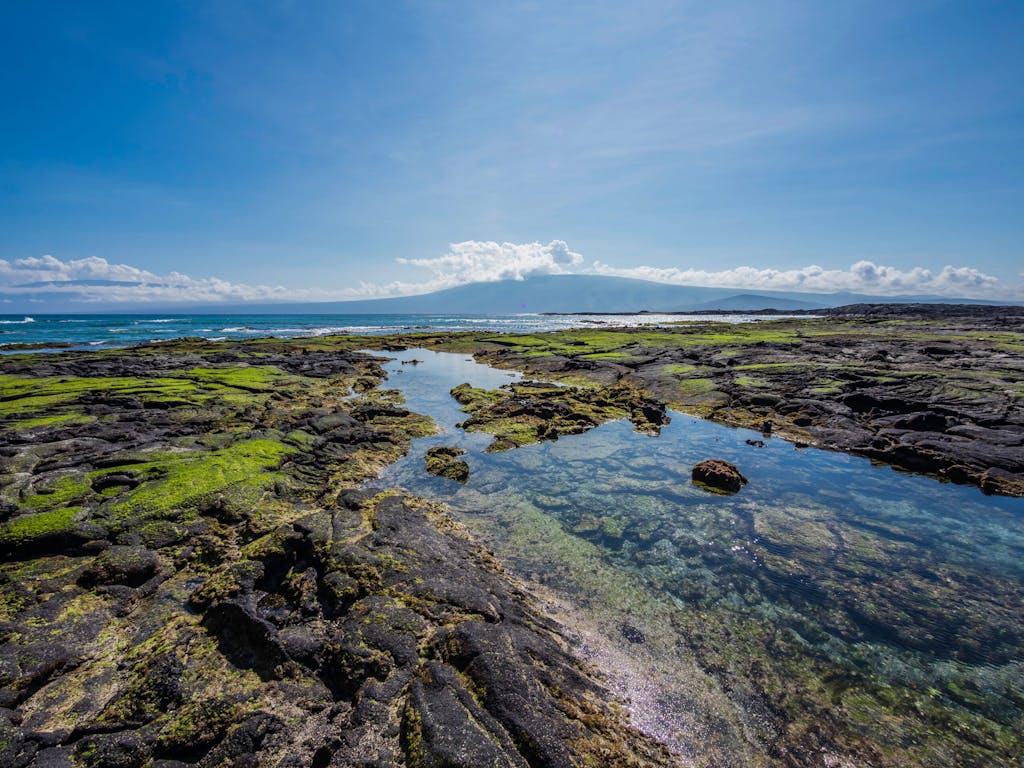
Fernandina Island, third largest of the Galápagos chain, is best known as the home of an endangered subspecies of the Galápagos tortoise discovered as recently as 2019. Of course, the island hosts many other creatures by land and sea, including its variety of mangroves.
You can find the marine iguana taking a dip along the shores of Fernandina, and you can spot charming penguin colonies. Fernandina is one of only two larger islands that has never introduced mammals.
Fernandina is the most active and intact of the volcanoes in the Galápagos. Unlike their amphibious brethren, land iguanas like the heat and nest alongside and even within the caldera. Growing in young lava are the lava cactus, endemic to the island and known to survive with hardly any water.
Punta Espinosa is the only visitor landing on the island, offering a short and long walk to spot flightless cormorants or Galápagos hawks, among other surprise guests. At either of two primary dive sites, visitors can submerge themselves into the world of sea turtles, sharks, rays, seahorses and other underwater dwellers.
Isabela Island

The land formation of Isabela Island, the largest island in the Galápagos, bears an uncanny resemblance to a seahorse. It’s home to people, too, in such towns as Villamil, where fishing and agriculture have given way to the tourism economy. Visitor sites are spread throughout the island, including the Tortoise Center, offering ample chances to explore.
The presence of human beings is small compared with the whales and dolphins. At least 16 species of whales have been identified near Isabela alone.
Like Fernandina, Isabela has penguins and marine iguanas, perhaps because it also has a lava field and nutrient-rich waters. Visitors will head to Punta Moreno to hike the land, which features coastal lagoons smack in the middle of the lava field. These small bodies of water are a favorite hangout of white-cheeked pintail ducks and even flamingos.

If you are lucky, you might spot the Mangrove Finch, considered one of the rarest birds in the world — fewer than 100 are known to survive — on the northwest coast.
Santiago Island

Tourists boats and cruise ship guests just might encounter the fur seal on a visit to James Bay on Santiago Island. It’s also one of the islands Darwin visited during his voyage aboard the Beagle in the 1830s.
After human beings plundered the island, Santiago has spent the past decade focusing on conservation and restoration to native vegetation. Although there was an attempt to colonize Santiago in the early 20th century, it is uninhabited and has eradicated all introduced pigs, goats and donkeys.
You can find glistening Sally Lightfoot crabs skittering around Sullivan Bay, where you also can walk across recent (within the past 150 years or so) lava flows. The ropelike formations of lava borrow the Hawaiian word pahoehoe to describe it. Santiago also offers seven dive sites, and besides fish, fur seals and sea lions, snorkelers and divers might also find stunning underwater rock formations.
The wildlife of the Galápagos
Part of what makes the Galápagos unique is the protection afforded its plant and animals. The region is known not only for species found nowhere else on Earth, but also for their remarkable environment. Whether it’s a giant tortoise lumbering around a conservation park or blue-footed boobies nesting on arid, rocky ground, the many species that cohabitate here do so undisturbed.
The Galápagos’ “location at the confluence of three ocean currents makes it one of the richest marine ecosystems in the world,” UNESCO notes. Along with their extreme isolation, these islands have fostered some unique organisms, including massive cactuses, swimming marine iguanas and flightless cormorants.
Here is a look at some of the Galápagos’ more famously unusual inhabitants, as well as a peek into what makes the islands such an unbelievable ecotourism destination.

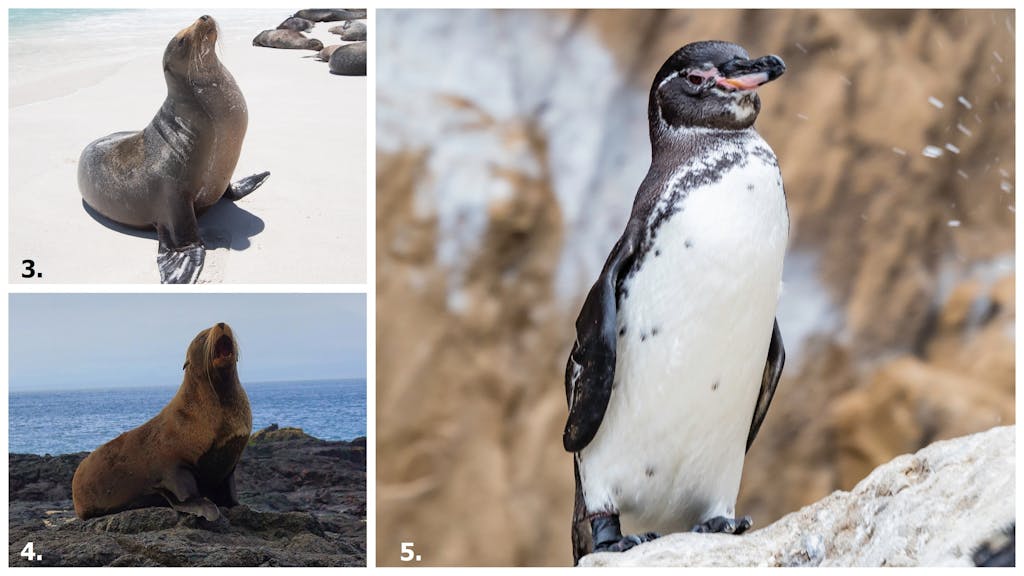

1. Marine iguana
The Marine iguana epitomizes the story evolution. It has learned to adapt its breathing so that it can stay underwater in order to feed on saltwater algae. It can hold its breath up to 30 minutes.
2. Giant tortoises
Imagine a lumbering creature that resembles a garden-variety turtle…on steroids. These behemoths can grow to more than 3 feet, and males of the species can weigh as much as half a ton. (Females are generally about half that.) In the wild, they may live a century or longer.
3. Galápagos sea lion
Don’t challenge a Galápagos sea lion to a foot race. Their anatomy is such that they can reach speeds on land that, it’s said, a human being will come in second in a footrace between the two. Likewise, don’t challenge this species to see which of you can hold your breath longer when you’re underwater. Unless you’re an experienced free diver, you’ll probably lose; these animals can clock as much as 10 minutes. Instead, admire them as they loll on the beach, and be thankful that your main meal isn’t, as theirs is, sardines.
4. Galápagos fur seal
The “fur” in their names explains why they were nearly wiped off the face of the Earth. New regulations saved them, but they remain endangered because a warmer ocean affects their source of food as does plastics pollution. They are found mostly in the western islands and when on land, prefer, not surprisingly, the shade.
5. Galápagos penguins
These penguins are munchkins compared with penguins farther south; they weigh 5.5 pounds at most and don’t generally grow more than 20 inches tall. By contrast, Emperor penguins, the largest of the penguin species and found in Antarctica, can weigh as much as 100 pounds and stand 50 inches tall. Most of these northerly penguins live on Isabela and Fernandina islands.
6. Galápagos short-eared owl
The short-eared Galápagos owl is a stealthy creature; it makes no noise when it flies, despite a wingspan that may measure more than 3 feet. Like most owls, these birds are active at night, but aren’t afraid to hunt during the day, especially in the absence of the Galápagos hawk.
7. Blue-footed booby
The name “blue-footed booby” is enough to elicit a smirk, but what if your potential mate evaluated your fitness by your feet? These birds try to sweep female birds off their feet by doing a little dance that displays what apparently is their best quality, the bluer the better. As for the name, early explorers thought these birds weren’t very bright and labeled them “boobs.” Untrue, at least when it comes to hunting; when a fish is spotted, several of the blue-footed birds may dive at a time, it’s said, to confuse the fish.
8. Flightless cormorant
Most cormorants can fly; these do not, so they stick close to Isabela and Fernandina islands. When you see their wings opened, as in Photo 8 above, it’s because they aren’t waterproof as most ocean-adjacent birds tend to be, and they have to dry themselves off. As for their lack of flight? That, too, is evolution, it’s said; they had few enemies and lost the ability to fly.
9. Galápagos hawk
Study the face of the Galápagos hawk and you’ll see it makes no effort to disguise what it is: an apex predator. Its wingspan is 4 feet, its beak is strong and helps it scavenge, and its razor-sharp talons allow it to pick off rodents, snakes and lizards as part of its diet. As strong as they are, their population has dwindled to about 150 nesting pairs.
With such unique biodiversity onshore, offshore, overhead and literally underfoot, the Galápagos Islands never fail to amaze. Each cruise itinerary allows for up-close encounters and superb photo-ops, making these islands an ideal destination for birders, nature-lovers and photographers.
Ready to experience the Galápagos Islands? These year-round cruise itineraries can take you there.



